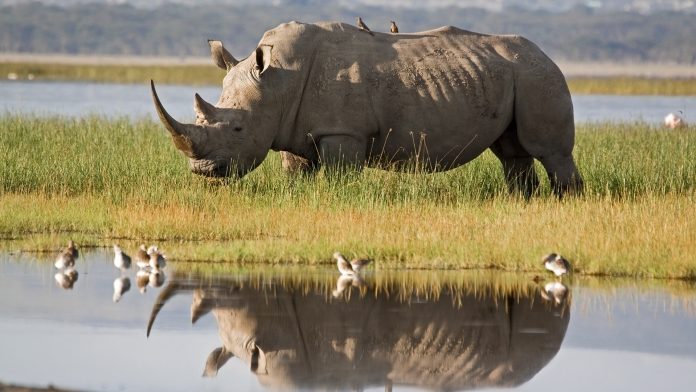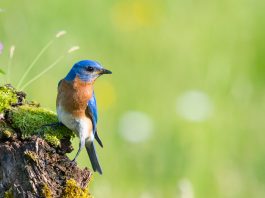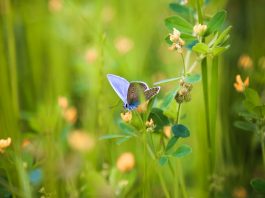The BioRescue Project has announced a significant development in stopping the extinction of the northern white rhino, as the initiative has produced another three embryos of the severely endangered species.
BioRescue is an internationally funded project by the German Federal Ministry of Education and Research that is comprised of scientists and conservationists from the Leibniz Institute for Zoo and Wildlife Research (Leibniz-IZW), Safari Park Dvůr Králové, Kenya Wildlife Service, and Ol Pejeta Conservancy. The initiative was started in an attempt to prevent the extinction of the northern white rhino, of which only two of the species still remain, Najin & Fatu, who are both females.
At the Ol Pejeta Conservancy, the team has recently conducted their sixth successful collection of northern white rhino oocytes – which are immature eggs – making that a total of 80 eggs collected since the project started in 2019. Subsequently, the oocytes were airlifted to the Avantea laboratory in Italy, where they will undergo maturation, fertilisation, embryo development, and cryopreservation.
The last of the northern white rhino
Two of the embryos were obtained by using semen from a northern white rhino bull called Suni, whose genetics have been utilised for all existing embryos. The team were also able to use semen from another northern white rhino bull named Angalifu, who died in 2014 and whose sperm was initially thought to be incapable of fertilising eggs. However, comprehensive sperm viability tests that employed multiple pig oocytes allowed the researchers to identify viable sperm that created another embryo, taking the total to three.
Cesare Galli, a Professor at Avantea, said: “Once again, the use of knowledge coming from livestock species has helped to identify a batch of Angalifu semen that could eventually be used successfully to produce viable embryos.
“We are impressed by the number of embryos obtained from the 17 oocytes, given the paucity of eggs and the quality of the semen. It also indicates that conducting the procedure performed on a regular basis is not only harmless to Fatu but also raises the number of embryos obtained.”
Prior to gathering the eggs, the team decided not to perform oocyte collection on the oldest of the two northern white rhinos, Nájin, as so far none of her eggs have been of sufficient quality to create viable embryos, with all 12 so far being produced by her daughter, Fatu. This meant that from an ethical perspective, the team didn’t want to make her endure any unnecessary stress.
“During the recent procedures it was clear that Nájin’s ovaries are no longer producing a large number of eggs and that their quality is compromised,” said Jan Stejskal, Director of International Projects at Safari Park Dvůr Králové. “She is an old lady, and it seems it’s not worth subjecting her to the stress of any further procedures. However, her health status will be frequently monitored.”
Next stages of the procedure
The embryos have now entered a crucial phase of development in Ol Pejeta, with the two northern white rhino females being moved into an encloser with a sterilised southern white rhino bull named Owuan, who will act as an oestrus detector for the females as they come into season. The team is now diligently monitoring the behaviour and vocalisations of the rhinos as they prepare for the first embryo transfers later in the year.
Professor Thomas B. Hildebrandt, the project leader of BioRescue and Head of the Department of Reproduction Management, Leibniz-IZW, said: “We are very happy how BioRescue is progressing. The achievement of 12 embryos in total, including the first embryo from the northern white rhino bull Angalifu as well as the successful translocation of the two potential surrogates into Owuan’s enclosure, demonstrate the quality of this joint project. We are now focussing on the first embryo transfer in the upcoming months.”
“The welfare of all the animals involved in the project is constantly monitored both throughout the ethical risk assessment of the procedures whenever they are taking place, and the individual behavioural observations”, said Barbara de Mori, Director of the Ethics Laboratory for Veterinary Medicine, Conservation and Animal Welfare of Padua University. “A dedicated staff from both Padua University and KWS and Ol Pejeta is constantly working on data collection and is checking all the details of the daily welfare of the individual animals”.
The BioRescue team is planning to continue collecting embryos from the northern white rhino females in a cycle lasting three to four months, subject to COVID-19 travel restriction to Kenya. The next step of the programme is to complete a successful embryo transfer.
Najib Balala, Kenya’s Tourism and Wildlife Cabinet Secretary, said: “It is very encouraging to note that the project has continued to make good progress in its ambitious attempts to save an iconic species from extinction. With 12 pure northern white rhinoceros’ embryos so far developed, the project should now focus on the next steps of embryos transfer into the surrogate females at Ol Pejeta Conservancy for it to achieve its ultimate objective.”









